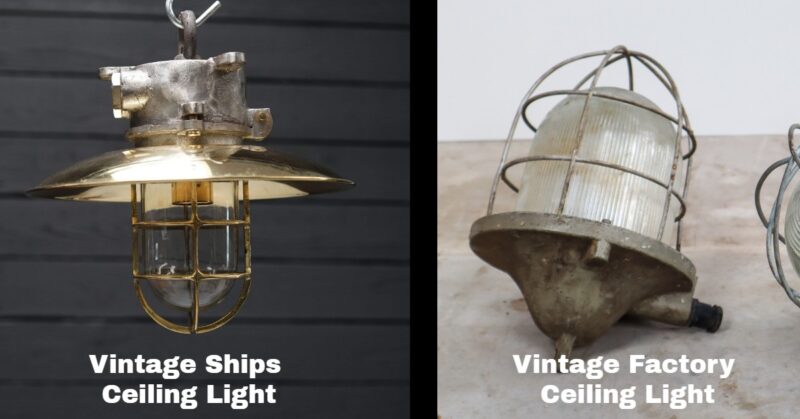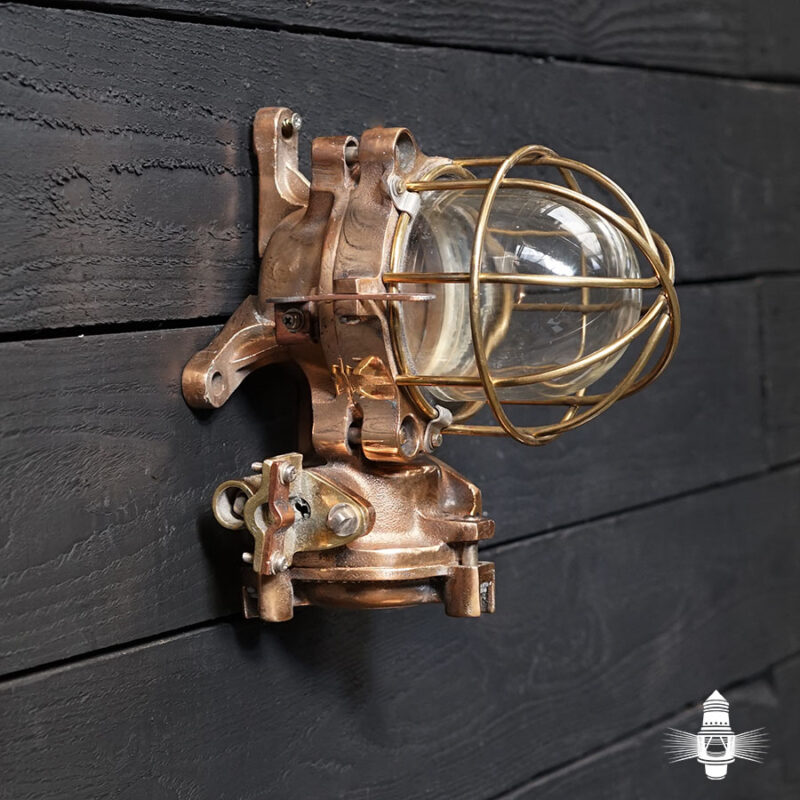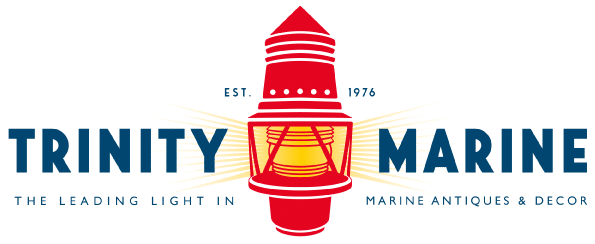Ships lights are simply the best! We are biased of course, but let me tell you why we think they are.
Until the industrial interior trend arrived people thought of nautical lights and lamps as just seaside pub & restaurant décor, whilst we, and sailors alike knew that there was so much more soul and depth to them than that.
Industrial lighting – where it all began

The ‘Industrial Trend’ came along as a natural progression from ‘Salvage & Reclamation’, the green credentials of buying reclaimed, an allergic reaction to mass produced décor that led to a respect for the way things used to be made and warehouses and workshops being converted to shops, restaurants and living spaces. Consequently, designers and the public quickly gained an appreciation of design & engineering and realised what we knew all along, that where there is beautiful form in an object that is designed to perform perfectly.
Industrial lighting started to come from factories, mills and hangars around the country and to supply the increasing demand 100’s of lights started to come from factories in deep Eastern Europe. We were quick to show interior designers our version of industrial lighting, those from ‘floating factories’ at the ship-breakers and they soon realised that the lights and fittings were superior to any of those found on land.
Interior designers were quick to no tice that the extra build quality and superior materials found in the marine industrial lights gave them a warmth & finesse lacking in the cold Eastern European factory lights. This, along with the vast selection of styles that marine lighting brings and the ability to supply large commercial sized runs of the same light, after all ‘where there is one on a ship there is a hundred’, gave our stylist and designer followers to create very distinctive spaces and themes. The range meant that we were able to supply not just the accent lighting and decorative lighting, but also the general lighting and task lighting along with switches and accessories that finish the look. This meant we were well placed to fulfil the most demanding lighting schemes. Almost instantly we picked up major clients in restaurant & bar chains, hotel & home developers and film & TV.
tice that the extra build quality and superior materials found in the marine industrial lights gave them a warmth & finesse lacking in the cold Eastern European factory lights. This, along with the vast selection of styles that marine lighting brings and the ability to supply large commercial sized runs of the same light, after all ‘where there is one on a ship there is a hundred’, gave our stylist and designer followers to create very distinctive spaces and themes. The range meant that we were able to supply not just the accent lighting and decorative lighting, but also the general lighting and task lighting along with switches and accessories that finish the look. This meant we were well placed to fulfil the most demanding lighting schemes. Almost instantly we picked up major clients in restaurant & bar chains, hotel & home developers and film & TV.
Industrial lighting like no other
The quality of design & build of nautical lights & fittings are second to none due to the importance of their task and the potentially drastic consequences of them failing.
With lives at stake and whilst being exposed to the harshest conditions on the planet, marine fixtures & fittings were designed and refined until they were functioned perfectly a long time ago, the design process of course being sponsored by the bottomless pit of wealth of global commerce. That is why so many of the designs have remained the same for over a hundred years, changing only in materials, from bronze, brass & copper, to aluminium & iron and most recently to colourful polycarbonates.
No design or colour is an accident, apart from the passenger areas of ocean liners none of the fittings were designed or painted with aesthetic in mind yet the styles and designs are elegant and beautiful.
With that in mind, if you spend long enough immersed in our website or showrooms you may notice ever increasing levels of build quality in fittings and fixtures that we reclaim depending on what area of ‘marine’ we salvaged them from. The quality of Merchant Navy fittings for example, sponsored by cargo and oil & gas industries are surpassed by those of the Royal & World Navies and demands of War, culminating in the genre of ‘Lighthouse & Beacons’ where a failure of equipment leads definitely to disaster.
In the beginning copper and bronze and brass alloys that obtained copper were used as a default material for ships lights and lanterns simply because they do not corrode when exposed to salt water, but the ever increasing cost of copper led to the use of anodised aluminium or heavily painted iron in more recent years. Yet the timeless designs remain the same.
Bulkhead to Big Shed
As with many expressions & modern day terminology there is a nautical origin. The variety of light fitting these days known as a Bulkhead light, a variety of weatherproof light sold by the ‘big sheds’ (the large home improvement stores) to illuminate outdoor areas comes from the nautical term for a wall, the bulkhead. Although this style in today’s world is synonymous with an outdoor light they were actually used inside a ship. We are particularly fond of the classic round bulkhead light that we and sailors affectionately call a turtle light due to their appearance, this style of light fitting is one of many that hasn’t changed in design for over a hundred years..
Centuries ago shipping used to drive technological advancement in the same way that Space exploration does today. All of the glass lenses, prismatic and the iconic fresnel lens were designed to increase and refract.

Amongst the range s of nautical lights are what are known as explosion-proof lights which are those used by the petro-chemical ships, not because they are ‘bomb proof’, although they are built in such a way that they probably are!, but quite the opposite in that they are designed and built so as not cause an explosion by containing the light fitting and electrical current in an extremely tough and secure housing, resulting in the most gnarly looking lights that would not look out of place in Jules Verne’s ‘Nautilus’
s of nautical lights are what are known as explosion-proof lights which are those used by the petro-chemical ships, not because they are ‘bomb proof’, although they are built in such a way that they probably are!, but quite the opposite in that they are designed and built so as not cause an explosion by containing the light fitting and electrical current in an extremely tough and secure housing, resulting in the most gnarly looking lights that would not look out of place in Jules Verne’s ‘Nautilus’
From Ship to Shore
We have been salvaging lights from the finest ships for over 25 years. We satisfied the shipowners, wary of us getting in the way, by buying complete contents of ships which in turn gives us huge commercial sized runs of the same fitting as well as being able to purchase and sell them at a price cheaper than it would cost to make them.
To think of all the miles that these fittings have travelled, the conditions they have had to put up with and what they have witnessed. Our first major salvage project, P&O’s Canberra, sailed over 3 Million miles around the World, tirelessly cruising through the Tropics with even troop carrying duties into the conflict of the Falkland War before She drove up the beach in Pakistan. After reclaiming and refurbishing those fittings they were as good as the day they were made and ready for repurposing and a new life ashore.
